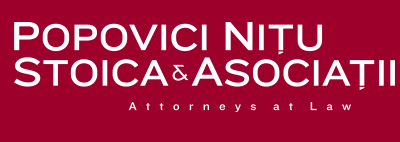- About Us
-
Expertise
- Banking & Finance
- Capital Markets
- Competition & Antitrust
- Corporate & Commercial
- Data Privacy
- Employment & Pensions
- Energy & Natural Resources
- Gambling & Betting
- Healthcare & Pharmaceuticals
- Insurance
- Intellectual Property
- International Arbitration
- Litigation
- Mergers & Acquisitions
- Project Finance/PPP, Concessions & Infrastructure
- Public Procurement
- Real Estate
- Restructuring & Insolvency
- Sports Law
- Tax
- Telecommunications, Media & Technology
- Transports & Logistics
- White Collar Compliance & Defense
- Our team
- Careers
- Publications
- News and Press
- Contact
Press Reviews
Interview. Silviu Stoica: The majority of deals in Romania can be attributed to strategic investors
Silviu Stoica, partner at Popovici Nitu Stoica & Asociatii, outlines the current state of the local M&A market to Business Review, describes its main trends and features and shares his projections for 2017.
Anda Sebesi
How did the Romanian M&A market evolve in 2016?

The first nine months of 2016 saw M&A activity in Romania fall against the same period of 2015. This slowdown basically mirrors the prevailing trend in the regional M&A market for the same period. M&A specialists’ projections at the end of 2015 and beginning of 2016 for the overall Central and Eastern European (CEE) M&A market were quite optimistic, perhaps fueled by 2015, a record-breaking year in the M&A sector.
But the enthusiasm boost about the M&A sector gradually began to lose its “aura” after the first half of 2016, as the number and value of deals failed to meet expectations. Numbers indicate that the Romanian market decreased by almost 50 percent from approximately USD 2.1 billion in H1 2015 to some USD 1.1 billion in H1 2016, as reported in the E&Y M&A Barometer. From a leadership role in the M&A sector in South Eastern Europe (SEE) and one of the most active M&A markets in 2015, Romania was ranked fifth in the first half of 2016, with a total of 56 M&A deals.
Therefore, M&A activity in Romania during 2016 was less intense than expected. Although the local M&A sector experienced a slight slowdown in the past 12 months, mostly strategic but also financial investors are keeping a close eye on Romania as it offers quality projects and attractive opportunities.
What were the main features of the local M&A market last year?
The best words to describe the general feeling around doing M&A in CEE would be prudence and uncertainty. Players took quite a prudent approach when it came to selling and also buying. And Romania was no exception to this rule.
Political and economic events at both global and regional levels shape M&A activity as they influence the appetite of investors and sellers. 2016 brought quite shocking events: worth mentioning are the highly unlikely Brexit vote that happened against all odds, and the continuous tensions between Russia and Western countries, including the unrest in Ukraine. And, of course, there is also the ongoing debate around “migrants” that turned into a real issue at European level.
So, the label for CEE in 2016 was prudence mixed with uncertainty, yet to a lower degree than in previous years. Although lots of M&A deals made it to the negotiating table, many transactions stalled on the way and failed to reach completion, as buyers and sellers were more reluctant to accept compromises. The money is there, but expectations for substantially “good” projects are also high. Compared to 2015, the Romanian M&A sector posted an undeniable drop in 2016.
In 2016, many expected the implementation of major initial public offerings (IPOs) for several strategic state-owned companies, such as the biggest Romanian airport (Otopeni Airport) and the most important Romanian port (Constanta), announced by the government since 2015. Perhaps this type of deal will take place, or at least be initiated, in 2017, as this would refuel the engines of the M&A sector and resume the growth tendency of the local M&A market.
What were the main sectors that attracted the most M&A transactions in Romania?
As predicted by M&A specialists in 2015, the leading economic sector in the local M&A market 2016 seems to have been manufacturing. Financial services and IT&C, retail and real estate follow closely. Glancing at transactions by economic sector, the Romanian M&A market also saw deals in various other areas, such as banking and agribusiness. This local picture mirrors the sectors’ allocation at regional level in 2015, when, in terms of number of deals, manufacturing registered 343 transactions while IT&C was second with a total of 298 deals.
The retail market in Romania grew in the past 12 months mainly due to the new 20 percent VAT rate, and the upward trend will most likely be maintained in 2017. This will positively influence the transactional area as we cannot exclude some movements for the hypermarkets with big players scrutinizing potential opportunities.
The most talked about deal in 2016 was probably the acquisition of the hypermarket chain Profi by Mid Europa Partners investment fund. Another big deal closed before the end of 2016 was the acquisition of the top Romanian dairy producer Albalact by Lactalis, a French group active at global level in the same industry. Another notable deal at local level was the sale of McDonald’s operations in Romania. The sum paid for the McDonald’s franchise in Romania amounted to more than USD 65 million.
What types of deals took place last year on the Romanian market?
In 2016, investors and business owners met at the negotiating table but the attitude was more reserved than in 2015 as they became cautious, so negotiations lasted longer than initially predicted. This also influenced to a certain extent the overall “closing rate” of M&A deals.
Romania has a very dynamic M&A market as it offers a full spectrum of deals in so many economic sectors. And the businesses put on the table meet the essential criteria of the investors, the most important one being the potential for healthy, sustainable growth. Another quality investors seek in their potential targets is the quality of the business. And businesses in Romania display this “must-have” as Romanian entrepreneurs have understood this necessity and are aiming to improve their businesses at all levels.
Looking at the investor profiles, the majority of deals in Romania can be attributed to strategic investors, as financial investors were not that active. An investor population snapshot at regional level confirms the local picture: more than 75% of the M&A deals in Central and Southeast Europe were closed by strategic investors.
Private equity players became more active and interested as potential buyers. They are mainly looking for good opportunities to invest in both new and “familiar” industries. Their appetite for placing their money in businesses that are new to their existing portfolios comes second. Private equity investors’ first and basically natural approach is to try to consolidate the businesses they are already accustomed to and know better how to develop.
As in previous years, various private equity funds with investments across the region have their hands full with exits from already mature investments. Business owners and entrepreneurs acting as sellers tend to have a more reasonable attitude when negotiating. They have changed their approach and expectations in terms of valuation indices for their businesses, allowing them to be present on the market and be seen by investors as a realistic partner for discussions.
Investors can confirm that the banking sector in Romania supports M&A activity with banks and financial institutions that show an uncontested will to become business partners, particularly for investors. And, at the same time, the steady recovery of the overall banking sector continues, which proves again that Romania has the prerequisites for being seen as a healthy business environment.
How do you expect the local M&A market to perform in 2017?
Prospects are encouraging for the Romanian M&A market in the 12 months ahead. After a quite calm 2016 in terms of transactions, with no megadeals, vendors and investors should be more active this year as Romania still has a lot to offer in terms of great investment opportunities and “must-have” businesses in various sectors.
Many negotiations and due diligence processes initiated last year are ongoing and expected to be finished in the first half of 2017. The players on the local M&A market will probably be busier than in the past two years, as Romania still offers a lot of “too-good-to-refuse” investment opportunities. Potential investors should also consider important factors that contribute to making Romania a welcoming business environment: the investment-friendly tax regime, regulatory and legal framework, good macroeconomic indices, and economic development.
How did the CEE M&A market evolve last year?
A still fragmented regional M&A market managed to bring here mostly strategic but also financial investors. Private equity investors maintained a quite enthusiastic interest in the CEE M&A landscape, searching for opportunities to put their money to work. However, contrary to specialists’ expectations, the overall M&A rhythm slowed down in 2016 in the region, both in terms of value and number of deals.
As in recent years, investors generally continued to “redirect” their money towards CEE, still looking at Russia’s M&A offer rather reluctantly. CEE economies are still in the recovery phase and have become more and more appealing to the investor population in general, as they promise quite interesting businesses at tempting prices with prospects of high returns to investors’ satisfaction.
Investors’ behavior in 2016 showed that amongst the preferred industries for investing their money were manufacturing, services, and IT. These sectors standout in terms of the number of deals, but the overall value of M&A deals in the region was below the 2015 results.
Download Article










